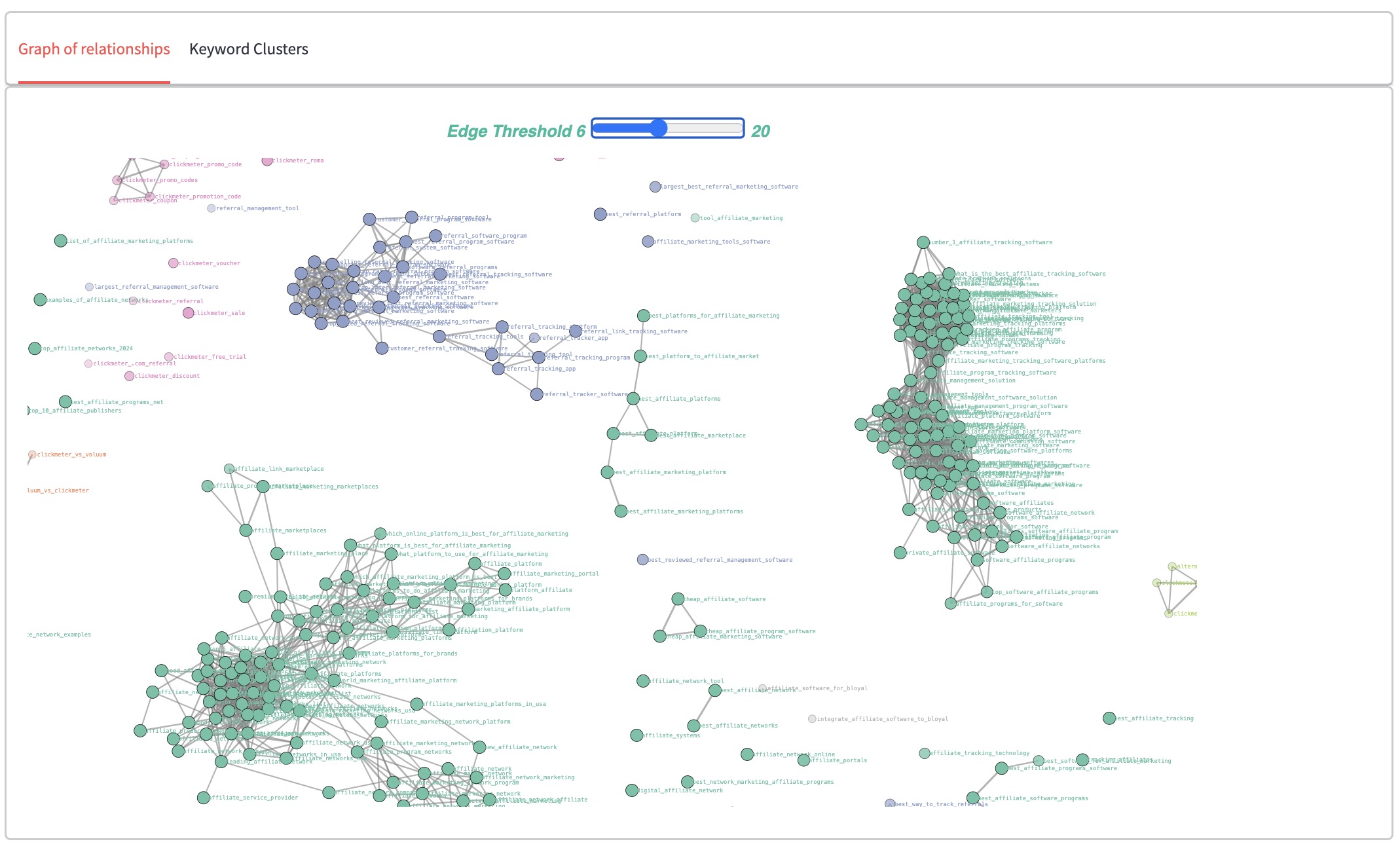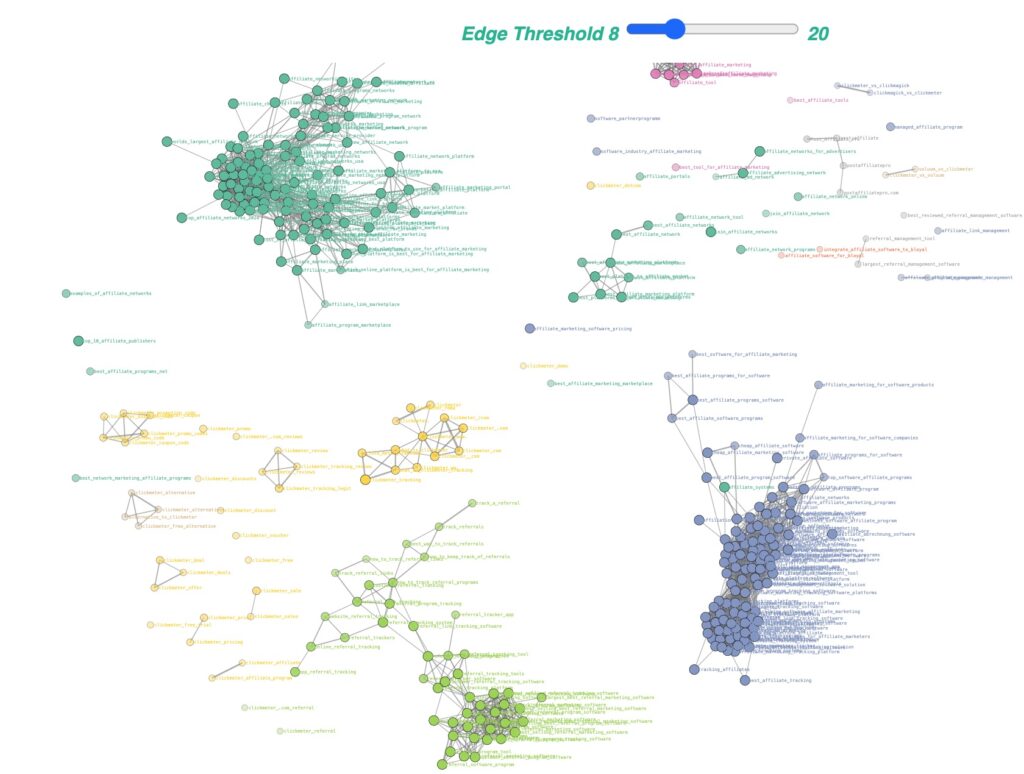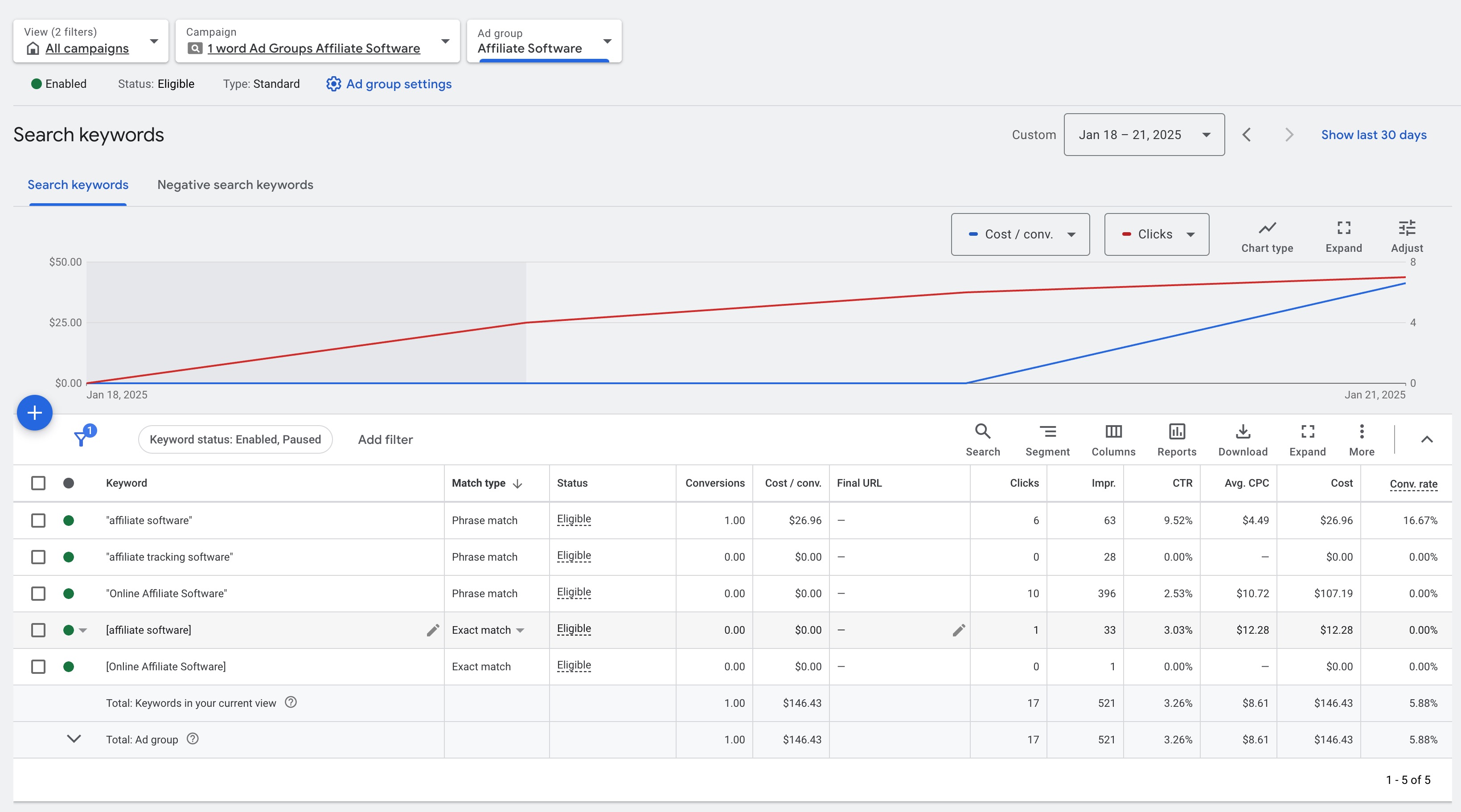
Search Term Isolation is Critical for PPC Ads Optimization
Learn why search term isolation is vital for optimizing PPC ads. Discover how to target high-performing search terms, increase ROI, reduce costs, and streamline...
Unlock higher ROI in PPC campaigns by mastering optimization and semantic keyword grouping. Structure ad groups, align landing pages, and leverage tools for campaign success.
PPC (Pay-Per-Click) optimization means refining advertising campaigns to improve their performance. This includes working on key elements like keyword targeting, ad relevance, landing pages, and bidding strategies. The aim is to improve metrics such as click-through rates (CTR), Quality Scores, and Return on Ad Spend (ROAS) so that every dollar spent on advertising delivers the best possible results.
By optimizing PPC campaigns, you can reduce wasted spending by focusing on audiences with high intent and increasing conversion rates. Businesses that consistently optimize their campaigns achieve better ad placements, lower costs per click, and higher overall returns on investment.
Keyword grouping involves organizing related keywords into clusters within specific ad groups. These clusters are based on central themes that match what users are searching for. For instance, keywords like “buy running shoes” and “discount running shoes” can be grouped under an ad group called “Running Shoes for Sale.” This approach makes ads and landing pages more relevant to user searches, which improves engagement and leads to higher conversion rates.
Organizing keywords into groups also makes managing campaigns easier by creating a clear structure. It allows advertisers to create ad copy and landing pages tailored to specific keyword groups, which improves message relevance and user experience.
For better understanding of the scale of the problem, here are examples of keyword groups created by FlowHunt analysis from the PostAffiliatePro Google Ads account. PostAffiliatePro is affiliate tracking software and our task was to analyze 57,000 keywords in their campaign and split the keywords by relevancy into smaller chunks.
I added to the table just a small number of found groups, but it shows how tight connections between keywords in the group are found and highly relevant to a single Ad group.
| Group | Example Keywords |
|---|---|
| Brand group | [Post Affiliate Pro] [post affiliate] [postaffiliatepro] [postaffiliatepro.com] |
| Affiliate networks | [advertising affiliate network] [affiliate ad network] [affiliate advertising network] [affiliate marketing network] [affiliate network] [affiliate networks] [affiliate marketing platforms] [affiliate platforms for brands] [best affiliate marketing platforms] [top affiliate networks] [affiliate network companies] [best affiliate networks] [affiliate marketing best platform] [affiliate marketing networks usa] [affiliate marketing platform] [affiliate marketing networks list] [affiliate network comparison] [top affiliate marketing networks] [affiliate marketing platform software] [platform affiliate] [top affiliate marketplaces] [network affiliate marketing] … (and many more) |
| Affiliate management and tracking software | [affiliate management software] [affiliate program software] [affiliate tracking software] [affiliate marketing software] [affiliate management systems] [affiliate program management software] [affiliate software tracking] [affiliate tracking app] [affiliate tracking program] [affiliate tracking tools] [affiliate tracking technology] [best affiliate tracking] [software for affiliate marketing] [affiliate platform software] [all in one affiliate marketing software] [affiliate marketing tracking software] [best affiliate program software] [software affiliate program] … (and many more) |
| Referral tracking | [app referral tracking] [customer referral tracking] [referral link tracking] [referral link tracking software] [referral program tracking] [referral tracker app] [referral tracking app] [referral tracking software] [referral tracking tool] [website referral tracking] [best referral tracking software] [customer referral program software] [track referral links] [how to track referral links] [track referrals] … (and many more) |
| Clickmeter (competitor) | [click meter tracking] [clickmeter .vom] [clickmeter com] [clickmeter free] [clickmeter tracking] [clickmeter review] [clickmeter affiliate] [clickmeter coupon code] [clickmeter promo code] [clickmeter sales] [clickmeter price] [clickmeter reviews] [clickmeter tracking legit] [clickmeter demo] [clickmeter affiliate program] … (and many more) |
The same group of keywords in graphical visualization of groups looks like this:

Semantic keyword grouping is a key part of PPC optimization. It allows advertisers to create more personalized and effective ad campaigns.
Ad groups in PPC campaigns should be organized around specific themes to maintain relevance and improve performance. Themes connect keywords, ad copy, and landing pages, ensuring they match user intent. By creating ad groups based on themes, you can improve Quality Scores, lower cost-per-click (CPC), and simplify campaign management.
Define a Central Theme for Each Ad Group
Focus each ad group on a single theme identified through keyword research. For example, if you are promoting athletic shoes, potential themes could include “Running Shoes,” “Basketball Shoes,” or “Tennis Shoes.” This theme forms the basis for choosing related keywords, writing ad copy, and designing landing pages.
Group Semantically Related Keywords
Organize keywords that are closely related to the theme. Use tools like Google Keyword Planner or SEMrush to find keyword variations that align with user searches. For instance, in a “Running Shoes” ad group, include keywords such as “best running shoes,” “lightweight running shoes,” and “buy running shoes online.”
Match Ad Copy to the Theme
Write ad copy that clearly reflects the theme. Include the main keyword in the headline and description to make your ad more relevant and attract clicks. For example, an ad for the “Running Shoes” theme could use a headline like “Shop Lightweight Running Shoes” and a description highlighting features such as “Comfort and Performance Designed for Runners.”
Customize Landing Pages for Each Theme
Ensure the landing page matches the specific theme. A landing page for the “Running Shoes” ad group should only feature running shoes and avoid showing unrelated products. This helps create a better user experience and increases the likelihood of conversions.
Regularly Monitor and Adjust Themes
Update themes based on performance data and trends in your industry. Review metrics like Quality Score, click-through rates (CTR), and conversion rates to identify areas where adjustments can improve results.
By organizing ad groups around themes, you can make ads more relevant, improve targeting accuracy, and create a smoother experience for users from their search query to the final conversion. This strategy is essential for running effective PPC campaigns.
Landing pages act as the destination for a PPC campaign, where you connect user intent with the offer shown in the ad. To achieve better conversion rates and improve Quality Score, your landing pages need to match the keywords and messaging used in the related ad group. This alignment creates a smooth user experience, builds trust, and encourages users to take action.
The headline on your landing page should directly reflect the main keyword and promise from the PPC ad. For example, if your ad headline says “Affordable Office Chairs,” your landing page should feature a clear headline like “Shop Affordable Office Chairs Today.” This consistency helps users feel confident they’ve landed in the right place, lowering bounce rates and boosting engagement.
Adding primary and secondary keywords throughout the landing page increases relevance. Place keywords in important sections, such as:
Make sure the keywords fit naturally. Avoid overloading the content with keywords, as this can harm user experience and lead to penalties.
To match the search intent behind the keywords, structure and adapt your landing page to meet the needs of users. For example:
Keeping your ad and landing page visually and textually consistent builds trust and enhances user experience. Use the same branding elements, such as colors, logos, and images, on both. Match the tone and style of the ad copy to make the user’s journey cohesive.
A large number of PPC users browse on mobile devices, so your landing pages must be mobile-friendly. Ensure the pages respond well on all devices, load quickly, and display content clearly. Fast load times are critical because even a 1-second delay can reduce conversions significantly.
Your landing page should include a clear CTA that matches the intent behind the keywords. Place the CTA where it’s easy to see—above the fold—and use action-oriented phrases such as “Sign Up Now” or “Get Your Free Quote.” Ensure the CTA matches the offer in your ad to drive conversions effectively.
A/B testing helps you find ways to improve landing pages. Test different elements like headlines, CTA placement, color schemes, and keyword usage to see what works best for your audience. Use tools such as Google Optimize to make continuous improvements.
By aligning your landing pages with keywords, you can create a better user experience, improve Quality Scores, lower costs, and get the most out of your PPC campaigns.
When running effective PPC campaigns, precise targeting is essential. Negative keywords help you refine this targeting. If you skip adding negative keywords during setup, your ads may show up for irrelevant searches. This can waste your budget and lower your return on investment (ROI).
Negative keywords help you block search terms that don’t match your products or services. For example, if you sell premium eyeglasses, adding terms like “wine glasses” or “free glasses” as negative keywords stops your ads from showing for those searches. This ensures your ads target queries that match user intent, making them more relevant and engaging.
Avoiding negative keywords can lead to several problems:
To make your PPC campaigns more effective, follow these practices:
Using negative keywords strategically helps your ads reach the right audience. This improves the performance of your PPC campaigns and ensures your budget is spent wisely.
Managing ad groups efficiently is critical for optimizing PPC campaigns and achieving strong results. Tools designed for ad group management provide automation, useful insights, and actionable recommendations to improve campaign performance. One standout option in this category is Optmyzr, known for its robust features and user-friendly interface.
Optmyzr is a top-tier PPC optimization tool that helps simplify the more complex tasks involved in managing ad groups. Created by a former Google Ads employee, the platform is specifically designed to meet the needs of digital marketers and PPC professionals. It offers intuitive workflows, automation options, and advanced reporting features.
One of its key features is the Rule Engine, which automates optimization tasks. With this tool, marketers can set up custom rules to manage their ad groups. These rules can handle tasks such as bid adjustments, keyword refinements, or pausing ads that underperform. Automation like this helps reduce manual work, giving marketers more time to focus on strategic planning.
Another valuable feature is the Blueprints system. This tool allows you to design and implement structured workflows, ensuring consistency across your ad groups while saving time. For example, you can optimize ad group structures based on specific themes or performance metrics. This approach improves relevance and helps boost Quality Scores.
By using tools like Optmyzr, you can streamline your workflow, improve ad targeting, and achieve better campaign results. These tools help you maintain relevance and maximize ROI in your PPC efforts.
PPC (Pay-Per-Click) optimization is the process of refining advertising campaigns by improving keyword targeting, ad relevance, landing pages, and bidding strategies to increase click-through rates (CTR), Quality Scores, and return on ad spend (ROAS).
Keyword grouping organizes related keywords into clusters based on central themes, making your ads and landing pages more relevant to user searches. This improves engagement, increases conversion rates, and simplifies campaign management.
Negative keywords prevent your ads from appearing for irrelevant searches, saving your budget and ensuring your ads reach the right audience, which increases campaign efficiency and ROI.
Focus each ad group on a single theme, group semantically related keywords, match ad copy and landing pages to the theme, and regularly monitor performance to make data-driven adjustments.
Tools like Optmyzr offer automation, advanced reporting, and workflow management to streamline ad group management, optimize campaigns, and improve overall performance.
Viktor Zeman is a co-owner of QualityUnit. Even after 20 years of leading the company, he remains primarily a software engineer, specializing in AI, programmatic SEO, and backend development. He has contributed to numerous projects, including LiveAgent, PostAffiliatePro, FlowHunt, UrlsLab, and many others.
Discover how FlowHunt's AI tools can help you optimize your PPC campaigns, group keywords for higher relevance, and maximize your advertising ROI.
Learn why search term isolation is vital for optimizing PPC ads. Discover how to target high-performing search terms, increase ROI, reduce costs, and streamline...
Discover how PPC management automation and advanced keyword optimization strategies can double your conversion rates, reduce ad spend, and streamline your campa...
Automate negative keywords in Google Ads with FlowHunt's PPC AI Agent. Exclude irrelevant queries, reduce wasted spend, and improve conversions with AI-driven t...



